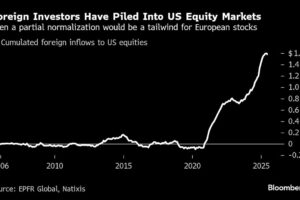<p class="canvas-atom canvas-text Mb(1.0em) Mb(0)–sm Mt(0.8em)–sm" type="text" content="The marijuana industry could seemingly do no wrong in the first quarter. Although the stock market is off to its strongest start since 1991, with the broad-based S&P 500 gaining 13% in the first quarter, it was the Horizons Marijuana Life Sciences ETF, a basket of four dozen variously weighted pot stocks, that took the cake by gaining 54%.” data-reactid=”11″>The marijuana industry could seemingly do no wrong in the first quarter. Although the stock market is off to its strongest start since 1991, with the broad-based S&P 500 gaining 13% in the first quarter, it was the Horizons Marijuana Life Sciences ETF, a basket of four dozen variously weighted pot stocks, that took the cake by gaining 54%.
<p class="canvas-atom canvas-text Mb(1.0em) Mb(0)–sm Mt(0.8em)–sm" type="text" content="Although there's a wide variety of marijuana stocks for investors to consider buying, only five pot stocks seem to be captivating the attention of Wall Street and investors. In no particular order, these popular marijuana stocks are Canopy Growth (NYSE: CGC), Aurora Cannabis (NYSE: ACB), Tilray (NASDAQ: TLRY), Cronos Group (NASDAQ: CRON), and Aphria (NYSE: APHA). With the exception of Aphria, the other four happen to be the largest pure-play marijuana stocks in the world, based on market cap.” data-reactid=”12″>Although there’s a wide variety of marijuana stocks for investors to consider buying, only five pot stocks seem to be captivating the attention of Wall Street and investors. In no particular order, these popular marijuana stocks are Canopy Growth (NYSE: CGC), Aurora Cannabis (NYSE: ACB), Tilray (NASDAQ: TLRY), Cronos Group (NASDAQ: CRON), and Aphria (NYSE: APHA). With the exception of Aphria, the other four happen to be the largest pure-play marijuana stocks in the world, based on market cap.
Clearly these pot stocks offer catalysts that investors find attractive. For example, Canopy Growth and Cronos have forged billion-dollar investment deals with brand-name companies, while Aurora Cannabis is on track to be the leading producer of weed at peak capacity. But for everything these popular marijuana stocks bring to the table, there’s one prevailing and unique reason each company is not worth buying. Let’s take a closer look.


Image source: Getty Images.
<h2 class="canvas-atom canvas-text Mb(1.0em) Mb(0)–sm Mt(0.8em)–sm" type="text" content="Canopy Growth: Bringing up the rear on profitability ” data-reactid=”26″>Canopy Growth: Bringing up the rear on profitability
<p class="canvas-atom canvas-text Mb(1.0em) Mb(0)–sm Mt(0.8em)–sm" type="text" content="As the largest pot stock in the world, Canopy Growth offers plenty of competitive advantages to long-term investors. This includes more than 500,000 kilos in projected peak annual output, a brand-name partnership with Constellation Brands, more than 70,000 kilos of yearly provincial supply deals in Canada, and having the best-known cannabis brand (Tweed) in its portfolio.” data-reactid=”27″>As the largest pot stock in the world, Canopy Growth offers plenty of competitive advantages to long-term investors. This includes more than 500,000 kilos in projected peak annual output, a brand-name partnership with Constellation Brands, more than 70,000 kilos of yearly provincial supply deals in Canada, and having the best-known cannabis brand (Tweed) in its portfolio.
<p class="canvas-atom canvas-text Mb(1.0em) Mb(0)–sm Mt(0.8em)–sm" type="text" content="But Canopy Growth is also generating large operating losses, and among this group of five popular pot stocks, it'll be the last to turn a recurring profit, according to Wall Street. Sitting on $3.7 billion in cash and cash equivalents, Canopy Growth is laying the foundation to push into new markets, including the U.S. via the hemp industry. It's also busy diversifying its product line, marketing and building its brands, and making complementary acquisitions. All of these factors mean it'll be spending aggressively and losing money in the process.” data-reactid=”28″>But Canopy Growth is also generating large operating losses, and among this group of five popular pot stocks, it’ll be the last to turn a recurring profit, according to Wall Street. Sitting on $3.7 billion in cash and cash equivalents, Canopy Growth is laying the foundation to push into new markets, including the U.S. via the hemp industry. It’s also busy diversifying its product line, marketing and building its brands, and making complementary acquisitions. All of these factors mean it’ll be spending aggressively and losing money in the process.
Can investors really overlook operating losses that have totaled more than 400 million Canadian dollars through the first nine months of fiscal 2019 for a $15 billion company? My guess is no, they can’t, which is why Canopy Growth is a pot stock worth avoiding.


Image source: Getty Images.
<h2 class="canvas-atom canvas-text Mb(1.0em) Mb(0)–sm Mt(0.8em)–sm" type="text" content="Aurora Cannabis: King of share-based dilution ” data-reactid=”46″>Aurora Cannabis: King of share-based dilution
<p class="canvas-atom canvas-text Mb(1.0em) Mb(0)–sm Mt(0.8em)–sm" type="text" content="Among millennial investors, there's probably no stock they're more enamored with (pot stock or not) than Aurora Cannabis. The company's 700,000 kilos of potential yearly output, along with its push into two dozen countries, would presumably set the company up for long-term success.” data-reactid=”47″>Among millennial investors, there’s probably no stock they’re more enamored with (pot stock or not) than Aurora Cannabis. The company’s 700,000 kilos of potential yearly output, along with its push into two dozen countries, would presumably set the company up for long-term success.
<p class="canvas-atom canvas-text Mb(1.0em) Mb(0)–sm Mt(0.8em)–sm" type="text" content="However, management's growth-by-acquisition strategy since the beginning of 2018 has meant spending plenty of money that Aurora Cannabis simply didn't have. With little or no access to nondilutive forms of financing, Aurora was forced to turn to bought-deal offerings to raise capital. Between bought-deal offerings and using its common stock to finance acquisitions, Aurora's share count has soared. In just 18 quarters (4.5 years), Aurora's outstanding share count has ballooned from 16 million to about 1.02 billion.” data-reactid=”48″>However, management’s growth-by-acquisition strategy since the beginning of 2018 has meant spending plenty of money that Aurora Cannabis simply didn’t have. With little or no access to nondilutive forms of financing, Aurora was forced to turn to bought-deal offerings to raise capital. Between bought-deal offerings and using its common stock to finance acquisitions, Aurora’s share count has soared. In just 18 quarters (4.5 years), Aurora’s outstanding share count has ballooned from 16 million to about 1.02 billion.
Yes, acquiring new assets adds value. But the addition of new shares outstanding also drags down the value of existing shares and makes it that much harder for the company to turn in a meaningful per-share profit. Not to mention, 63% of the company’s total assets are currently tied up in goodwill, suggesting that big writedowns may be in its future. Long story short, Aurora isn’t a pot stock investors should consider buying.


Image source: Getty Images.
<h2 class="canvas-atom canvas-text Mb(1.0em) Mb(0)–sm Mt(0.8em)–sm" type="text" content="Tilray: In the midst of a business strategy shift ” data-reactid=”62″>Tilray: In the midst of a business strategy shift
<p class="canvas-atom canvas-text Mb(1.0em) Mb(0)–sm Mt(0.8em)–sm" type="text" content="Last year, Tilray was an absolute bottle-rocket stock for investors. Following an initial list price of $17 in mid-July, the stock catapulted to $300 a share just two months later. Even though Tilray has pulled back quite a bit, it’s still more than tripled since its listing in July, and it offers some of the strongest medical marijuana brands in the business.” data-reactid=”63″>Last year, Tilray was an absolute bottle-rocket stock for investors. Following an initial list price of $17 in mid-July, the stock catapulted to $300 a share just two months later. Even though Tilray has pulled back quite a bit, it’s still more than tripled since its listing in July, and it offers some of the strongest medical marijuana brands in the business.
<p class="canvas-atom canvas-text Mb(1.0em) Mb(0)–sm Mt(0.8em)–sm" type="text" content="Yet Tilray's fourth-quarter operating results also show that the company is in the midst of a substantial business strategy shift. Having previously focused on building up capacity in Canada, CEO Brendan Kennedy announced that Tilray would instead be looking to move into the U.S. market and Europe while deemphasizing Canada. In a way, Kennedy’s comments read as if Tilray is waving the white flag on Canada and simply missed out on early-stage opportunities.” data-reactid=”64″>Yet Tilray’s fourth-quarter operating results also show that the company is in the midst of a substantial business strategy shift. Having previously focused on building up capacity in Canada, CEO Brendan Kennedy announced that Tilray would instead be looking to move into the U.S. market and Europe while deemphasizing Canada. In a way, Kennedy’s comments read as if Tilray is waving the white flag on Canada and simply missed out on early-stage opportunities.
While I don’t disagree with Tilray’s shift to Europe and the U.S., I also understand that it’s going to be some time before the company is able to turn a profit as a result of this strategy shift. As the icing on the cake, Tilray badly lags Canopy and Aurora in terms of peak production. It simply doesn’t offer an attractive value proposition here.


Image source: Getty Images.
<h2 class="canvas-atom canvas-text Mb(1.0em) Mb(0)–sm Mt(0.8em)–sm" type="text" content="Cronos Group: Lagging in production and international expansion ” data-reactid=”78″>Cronos Group: Lagging in production and international expansion
<p class="canvas-atom canvas-text Mb(1.0em) Mb(0)–sm Mt(0.8em)–sm" type="text" content="Few marijuana stocks have been hotter than Cronos Group to start the new year, especially with the recent closure of Altria‘s $1.8 billion equity investment into the company. With Cronos now flush with cash and presumably able to execute on its long-term strategy and Altria owning a significant stake that may one day turn into a full-fledged buyout of the company, investors have clearly been pleased.” data-reactid=”79″>Few marijuana stocks have been hotter than Cronos Group to start the new year, especially with the recent closure of Altria‘s $1.8 billion equity investment into the company. With Cronos now flush with cash and presumably able to execute on its long-term strategy and Altria owning a significant stake that may one day turn into a full-fledged buyout of the company, investors have clearly been pleased.
But there are two pretty big deficiencies in Cronos Group, namely, that it’s done a poor job of expanding capacity and building international sales channels.
<p class="canvas-atom canvas-text Mb(1.0em) Mb(0)–sm Mt(0.8em)–sm" type="text" content="Cronos Group, if lucky, will be capable of producing 120,000 kilos at peak capacity, with most of its production coming from its wholly owned Peace Naturals (40,000 kilos) and its joint-venture project known as Cronos GrowCo (70,000 kilos). There are pot growers valued at less than a sixth of Cronos Group capable of generating just as much, if not more, cannabis on an annual basis.” data-reactid=”81″>Cronos Group, if lucky, will be capable of producing 120,000 kilos at peak capacity, with most of its production coming from its wholly owned Peace Naturals (40,000 kilos) and its joint-venture project known as Cronos GrowCo (70,000 kilos). There are pot growers valued at less than a sixth of Cronos Group capable of generating just as much, if not more, cannabis on an annual basis.
<p class="canvas-atom canvas-text Mb(1.0em) Mb(0)–sm Mt(0.8em)–sm" type="text" content="Furthermore, Cronos has managed to set up production in Israel and Australia and distribution networks in Germany and Poland. That's it. With very little in the way of overseas sales channels, Cronos Group could find itself in deep trouble if dried cannabis flower becomes oversupplied and commoditized in Canada and it has no means of offloading its excess production. With little in the way of sales in its most recent quarter, Cronos Group is easily avoidable.” data-reactid=”82″>Furthermore, Cronos has managed to set up production in Israel and Australia and distribution networks in Germany and Poland. That’s it. With very little in the way of overseas sales channels, Cronos Group could find itself in deep trouble if dried cannabis flower becomes oversupplied and commoditized in Canada and it has no means of offloading its excess production. With little in the way of sales in its most recent quarter, Cronos Group is easily avoidable.


Image source: Getty Images.
<h2 class="canvas-atom canvas-text Mb(1.0em) Mb(0)–sm Mt(0.8em)–sm" type="text" content="Aphria: No trust in management” data-reactid=”95″>Aphria: No trust in management
Finally, there’s Aphria, which is currently on pace to be the third-largest marijuana grower by peak production at 255,000 kilos a year. Aphria appears reasonably inexpensive ($2.5 billion market cap) relative to its production potential and has a history of generating positive EBITDA (earnings before interest, taxes, depreciation, and amortization).
<p class="canvas-atom canvas-text Mb(1.0em) Mb(0)–sm Mt(0.8em)–sm" type="text" content="Then again, this is also a company whose management team has lost the trust of Wall Street and investors following a December short-seller report from Quintessential Capital Management and forensic analysis firm Hindenburg Research. Though most of the allegations levied against Aphria proved inaccurate, according to an independent review, the committee did find that certain board members had a conflict of interest in certain Latin American acquisitions. Mind you, this finding came after an acquisition in March 2018 also stirred up question marks about conflicts of interest for Aphria’s executives regarding its purchase of Nuuvera.” data-reactid=”97″>Then again, this is also a company whose management team has lost the trust of Wall Street and investors following a December short-seller report from Quintessential Capital Management and forensic analysis firm Hindenburg Research. Though most of the allegations levied against Aphria proved inaccurate, according to an independent review, the committee did find that certain board members had a conflict of interest in certain Latin American acquisitions. Mind you, this finding came after an acquisition in March 2018 also stirred up question marks about conflicts of interest for Aphria’s executives regarding its purchase of Nuuvera.
<p class="canvas-atom canvas-text Mb(1.0em) Mb(0)–sm Mt(0.8em)–sm" type="text" content="On the bright side, longtime CEO Vic Neufeld and a few other board members are stepping aside, providing Aphria with a fresh management team to tackle what lies ahead. But regaining the trust of investors could prove tricky, which is why Aphria is in the no-go zone for investors.” data-reactid=”98″>On the bright side, longtime CEO Vic Neufeld and a few other board members are stepping aside, providing Aphria with a fresh management team to tackle what lies ahead. But regaining the trust of investors could prove tricky, which is why Aphria is in the no-go zone for investors.
<p class="canvas-atom canvas-text Mb(1.0em) Mb(0)–sm Mt(0.8em)–sm" type="text" content=" More From The Motley Fool ” data-reactid=”99″> More From The Motley Fool
<p class="canvas-atom canvas-text Mb(1.0em) Mb(0)–sm Mt(0.8em)–sm" type="text" content="Sean Williams has no position in any of the stocks mentioned. The Motley Fool recommends Constellation Brands. The Motley Fool has a disclosure policy.” data-reactid=”104″>Sean Williams has no position in any of the stocks mentioned. The Motley Fool recommends Constellation Brands. The Motley Fool has a disclosure policy.



